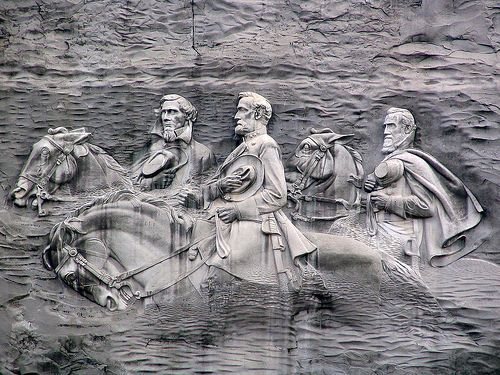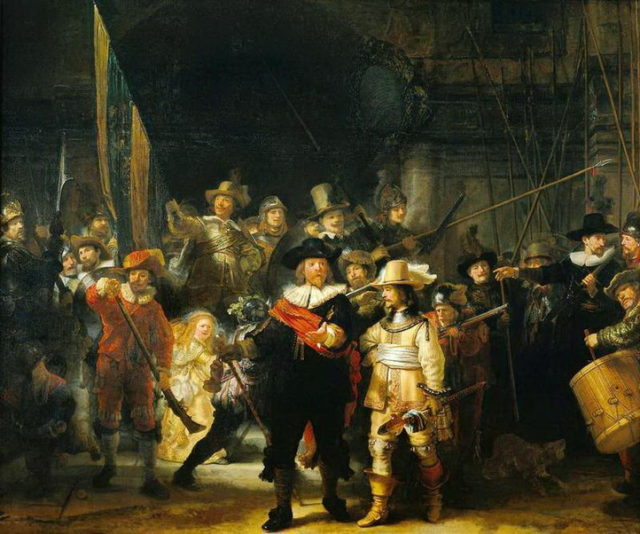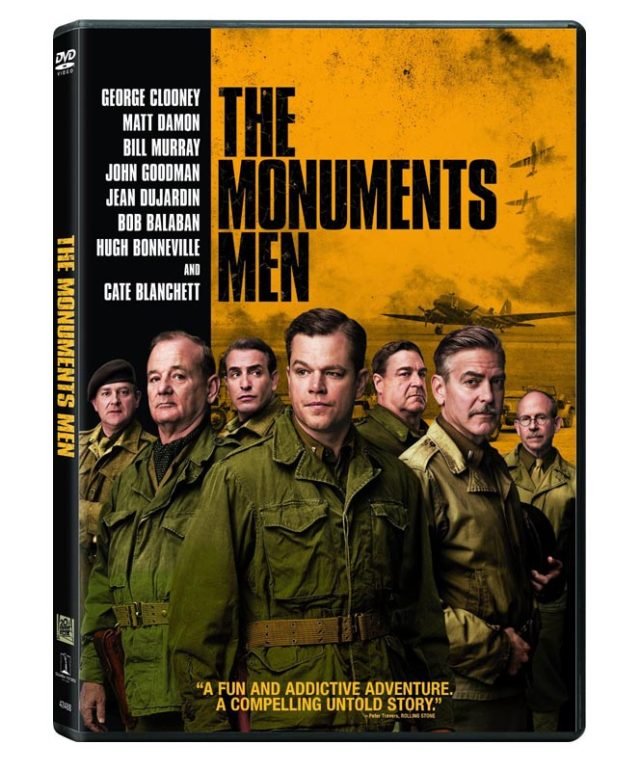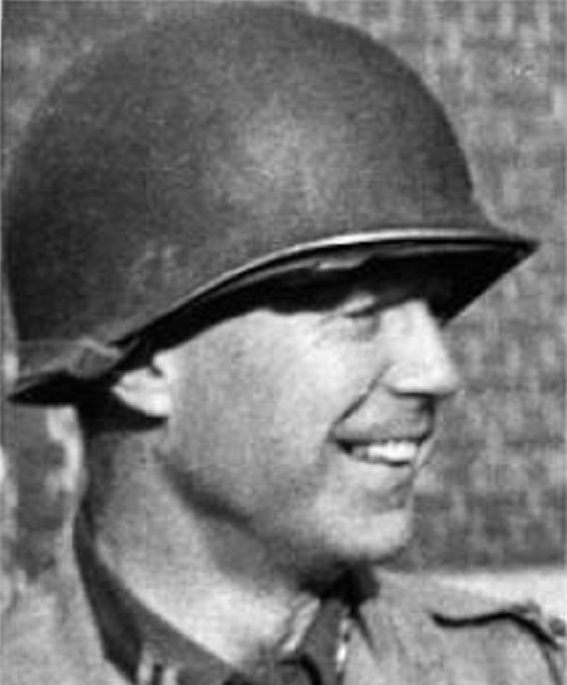Those who are defending the historic monuments which are under attack from Cultural Marxism – are the monuments men and women of today.

Sculpted figures of Jefferson Davis, Robert E. Lee, and Stonewall Jackson ~ Stone Mountain, Georgia
When National Socialism came to power in Germany in 1933, it sought an ethnic and cultural cleansing of the country. Jewish culture and art was not considered fully human and underwent a purge. Once Nazi Germany started World War II in 1939, it also sought the same purge for all of Europe. Art considered Germanic was confiscated from all over Europe and brought to Germany. Adolf Hitler planned to create a massive museum in his home town of Linz, Austria, the Furermuseum, which he envisioned to become the cultural center of Europe.
As with Jewish culture, Slavic culture was also considered not fully human and was to be purged. Polish culture was considered degenerate and was marked for destruction when the Nazis invaded Poland. The Poles were the next group of people marked for extermination after the Jews so that the Nazis could expand the Third Reich into that territory under their policy of Lebensraum to create living space for Germans. The Royal Castle in Warsaw, which was the home of Polish kings for six centuries, the seat of parliament, and a national treasure full of artwork, was deliberately bombed by the Nazis under direct orders from Hitler. The Nazis also shot at civilians, toppled monuments, and leveled historic buildings. Special fire units burned Poland’s libraries. The Nazis bored holes in the foundation of the castle in October 1939 creating a threat of complete destruction. This was finally accomplished by the Nazis after the Warsaw Uprising in August 1944 by detonating those explosives. In Cracow, the altarpiece of St. Mary’s Basilica was confiscated and taken to Berlin because it had been created by a German artist, although it had been commissioned by the king of Poland.
Once the United States entered the war, the American Commission for the Protection and Salvage of Artistic and Historic Monuments in War Areas was created. It was also known as the Roberts Commission, after Supreme Court Justice Owen Roberts, who was its chairman. The U.S. Army also established a program called Monuments, Fine Arts, and Archives (MFAA). Monument can be defined as “a memorial stone or a building erected in remembrance of a person or event,” and so it was used in this context. MFAA assigned monuments chiefs to the various U.S. army groups to protect cultural treasures in war zones and also to return those stolen by the Nazis. These men later became known as the Monuments Men. One example of their work was to create a map of Florence, Italy, for Allied bombers marking the monuments so that they would not suffer any damage. The Allied target in Florence was the railroad station, which was being used by the Nazis. As a result of this map, only the railroad station was bombed and nothing else was damaged. However, the Nazis looted the artwork there and blew up the bridges, the entrances of which had been designed by Michelangelo. The explosion also destroyed nearby Medieval buildings and towers.
One of the Monuments Men was Walker K. Hancock. He was born in St. Louis, Missouri in 1901. He started his higher education at the School of Fine Arts at Washington University in St. Louis, but after a year, he transferred to the Pennsylvania Academy of the Fine Arts in Philadelphia, where he studied from 1921 to 1925 with the sculptor Charles Grafly. Hancock was then awarded the Prix de Rome fellowship and studied at the American Academy in Rome, Italy from 1925 to 1928. Upon his return from Rome, he was made the head of the sculpture department at the Pennsylvania Academy of the Fine Arts in 1929 upon the recommendation of Grafly.
Hancock was drafted into the Army at the beginning of World War II. He was placed in the Medical Corps and was trained at Camp Livingston, Louisiana as a medic. He was later transferred to the Army War College in Washington, D.C. and designed the Air Medal. He was then transferred to the Pentagon and given a promotion to First Lieutenant. While he was there, he learned of the work of the MFAA and requested and received a transfer there.

Rembrandt’s The Night Watch
Hancock contributed greatly to the work of the Roberts Commission, which began on the continent of Europe after the Allied liberation of Normandy and the Allies’ subsequent advances. He was promoted to Captain and assigned to the First Army. He compiled a list for the Commission of monuments in France in need of protection. He witnessed such things as the destruction of Louis XIV furniture by the Nazis, who then used cheap modern furniture, which was more to their liking. He also found Rembrandt’s The Night Watch rolled up in a wooden housing. He helped to save the Chartres Cathedral in France from possible destruction. Twenty-two sets of explosives had been placed in nearby bridges and other structures by the Nazis, which were removed.
Hancock found that the Cathedral in La Gleise, Belgium had been severely damaged during the Battle of the Bulge, but that the statue of the Madonna of La Gleise had remained intact. When he urged the townspeople to move the statue to safety for its protection, they protested. He then convinced them to go to the Cathedral to take a look at the statue. When they did, a portion of the roof of the structure fell. This convinced them to move the statue to safety, which Hancock supervised.
He found the Cathedral at Aachen, Germany to be severely damaged by warfare. Charlemagne had ruled from Aachen beginning in 800 AD and the Palatine Chapel in the Cathedral had been used for the coronation of German kings and queens for six hundred years starting in 936. The works of art there had been removed by the Nazis and those were among many others which Hancock, with the other Monuments Men, recovered. The Monuments Men found that the Nazis hid paintings in mines in Germany for transfer to Linz. Hancock and the others helped to recover these paintings and return them to where they came from before the war. The Aachen Cathedral treasures were found in a mine in Siegen along with the original manuscript of Beethoven’s Sixth Symphony among many other priceless items.
 While he was in Weimar, Hancock encountered a Jewish chaplain who was conducting memorial services at Buchenwald, but did not have a Torah to use in them. Hancock provided him with one which had been found in a SS headquarters. At the end of his time in Germany, Hancock was placed in charge of the archives at Marburg University. The accomplishment of the MFAA were depicted in the motion picture The Monuments Men, which was released in 2014. The character Sergeant Walter Garfield depicted in that movie was based on Hancock. John Goodman was chosen for the role because he is a St. Louis native, as was Hancock.
While he was in Weimar, Hancock encountered a Jewish chaplain who was conducting memorial services at Buchenwald, but did not have a Torah to use in them. Hancock provided him with one which had been found in a SS headquarters. At the end of his time in Germany, Hancock was placed in charge of the archives at Marburg University. The accomplishment of the MFAA were depicted in the motion picture The Monuments Men, which was released in 2014. The character Sergeant Walter Garfield depicted in that movie was based on Hancock. John Goodman was chosen for the role because he is a St. Louis native, as was Hancock.
Hancock was the sculptor of many acclaimed monuments in his lifetime, including the World War I Memorial in St. Louis, the Pennsylvania Railroad War Memorial in Philadelphia, the statue of General Douglas MacArthur at the U.S. Military Academy in West Point, the statue of James Madison at the Library of Congress in Washington, the statue of John Paul Jones at Fairmount Park in Philadelphia, Christ in Majesty in the High Altar at Washington National Cathedral, the President Dwight D. Eisenhower Inaugural Medal, the bust of Andrew W. Mellon at the National Gallery of Art in Washington, the busts of Chief Justices Earl Warren and Warren E. Burger in the U.S. Supreme Court Building in Washington, and the busts of Vice President Hubert H. Humphrey and Presidents Gerald R. Ford and George H.W. Bush in the U.S. Capitol Building in Washington, among many, many others.
However, he was also the sculptor of the world’s largest carving, the Stone Mountain Memorial in Stone Mountain, Georgia. The mountain is made of Stone Mountain granite and this mountain is the only place in the world where this kind of granite is found. This carving, which is on the side of the mountain, was inaugurated by the Stone Mountain Monumental Association and was begun in 1925 by sculptor Henry A. Lukeman. It depicts Confederate heroes President Jefferson Davis, General Robert E. Lee, and Lieutenant General Thomas J. (“Stonewall”) Jackson. However, lack of funding brought the work to a halt in 1928, at which time only the head of General Lee was completed. The subsequent Great Depression prevented any further work and Lukeman died in 1935.
In 1958, the Georgia General Assembly purchased the mountain and created the Stone Mountain Memorial Association and Stone Mountain Park. The organization’s board selected Hancock to complete the carving and work resumed under his direction in 1964.

Walker K. Hancock
By this time, Hancock was living in Gloucester, Massachusetts. This caused some opposition to his appointment on the basis that a “Yankee” had been selected to complete the Confederate memorial. However, not only was Hancock originally from Missouri, but, he related in his Memoir, “that both of my grandfathers had fought in the Confederate army, that my father was one of the highest officers in the Sons of Confederate Veterans, and that my mother had been very active in the United Daughters of the Confederacy.” Hancock was certainly no Yankee.
I first visited Stone Mountain in July of 1969. The work on the carving was nearing completion at that time and the noise from the blasting was very loud and could be heard throughout the park. The park was a Confederate memorial park in those days. There was a Confederate Hall with exhibits about the history of the War Between the States and an electric map, the War in Georgia. There was also a Memorial Hall, with relics from the war, both Confederate and Union. There were also buildings from ante bellum plantations in the state and a train ride around the mountain. The trains were pulled by replicas of the Texas and the General, the two engines from the Great Locomotive Chase in Georgia in 1862.
While the final touches on the carving were not completed until 1972, it was essentially completed by 1970 and the dedication took place on May 9 of that year. I was present for the dedication that day and was glad to see the monument’s final completion after four and a half decades. The theme throughout the dedication was reunion and renunciation of sectionalism. The benediction was delivered by a black minister, who said in his prayer that he thanked God for Robert E. Lee, “Stonewall” Jackson, Jefferson Davis, Abraham Lincoln, and Ulysses S. Grant. This was the prevailing attitude during the entire time monuments to Confederate and Union soldiers of the war were being dedicated. It was that both the North and South erected monuments to their respective war heroes in a reunited nation, and this helped heal the nation.
Many examples of this over the years can be given, but I will let one suffice. The monument to the 128th New York Infantry Regiment on the Cedar Creek Battlefield in Virginia was dedicated on April 14, 1912. When the regiment’s veterans arrived for the dedication, the United Confederate Veterans camp in the nearby town of Strasburg held a dinner for them and put them up in their homes. Both the veterans of the 128th New York and the local Confederate veterans attended the dedication and considered the monument one to a reunited nation.
I only heard about objections to the carving once while I was there. On a newscast the night after the dedication, a newscaster reported that some were saying the carving was wrong because of slavery. He answered it by quoting from a letter which General Robert E. Lee wrote to his wife from Fort Brown, Texas on December 27, 1856, in which he said: “In this enlightened age there are few, I believe, but will acknowledge that slavery as an institution is a moral and political evil in any country. It is useless to expiate on its disadvantages.” He gave this as the answer to the objection and dismissed the objection with this fact.
However, a contrary spirit has now reared its head. The Cultural Marxist mentality is now sowing division and demanding that Confederate monuments be removed, or, as in the case of the Stone Mountain Memorial, destroyed. Its adherents are toppling monuments, just as the Nazis did, in order this time to purge Southern culture in particular and American culture in general. It would be a shame to see the greatest monument of one of the Monuments Men, Walker K. Hancock, who died in 1998 and did so much to save Europe’s monuments and create many here in the United States, be destroyed. Today, Confederate Hall has been made over into a museum of the ecology of the area and no longer lives up to its name. The Texas and the General have also been replaced with modern engines, so the purge of the park has already begun.
One of the arguments for removing the Stone Mountain carving is that the Knights of the Ku Klux Klan used to hold rallies on the mountain. However, at the same time, the National Park Service is beginning a $25 million dollar renovation of the Lincoln Memorial in Washington. The Washington Post for February 13, 1973 recorded that, on Lincoln’s birthday that year, a group of neo-Nazis wearing swastika arm bands and white helmets placed a wreath at the Lincoln Memorial and hailed Lincoln as a “champion of racial separation.” They then “put up their arms in Hitler salutes and marched around the corner to disperse with ritual shouts of ‘White Power!’” Any study of Lincoln’s racial views shows that he favored the supremacy of the white race over the black and the colonization of blacks outside the United States. I saw a pamphlet published by the United Klans of America in the 1970’s which quoted from Lincoln to support its white supremacist views. If the same mentality which is being applied to Confederate monuments were applied here, the removal or demolishing of the Lincoln Memorial would be advocated. However, a double standard is being applied here and Lincoln’s white supremacist and cultural cleansing views are being ignored.
Those who are defending the historic monuments which are under attack from Cultural Marxism are the monuments men and women of today. We need more of them. People who think otherwise should heed the following words of Walker Hancock, which he stated in his Memoir: “Although I have lived an exceptionally happy life, continually accompanied by good fortune, I possess, of course, my share of painful memories – some of these tragic ones, indeed. However I have clung to the prerogative – perhaps, in old age, the necessity – of dwelling as little as possible on such subjects.”
~ Sources ~
Lynn H. Nicholas, The Rape of Europa: The Fate of Europe’s Treasures in the Third Reich and the Second World War. New York: Alfred A. Knopf, Inc., 1994.
Robert M. Edsel with Bret Witter, The Monuments Men: Allied Heroes, Nazi Thieves, and the Greatest Treasure Hunt in History. New York: Little, Brown and Company, 2009.
Walker K. Hancock with Edward C. Lathem, A Sculptor’s Fortunes: Memoir. Gloucester, MA: Cape Ann Historical Association, 1997.
Walker K. Hancock, “Experiences of a Monuments Officer in Germany,” College Art Journal 5 (May 1946): 271-311.
J. William Jones, Life and Letters of Robert Edward Lee: Soldier and Man. Harrisonburg, VA: Sprinkle Publications, 1978 [1906].
John Saar, “Rites at Lincoln Memorial Attract 200 on Birthday,” Washington Post, February 13, 1973, B1, B4.
The Rape of Europa. DVD. Written and directed by Richard Berge, Nicole Newnham, and Bonni Cohen. Menemsha Films with Actual Films, Agon Arts & Films, and Oregon Public Broadcasting, 2006.
The Monuments Men. DVD. Directed by George Clooney. Culver City, CA: Columbia Pictures and Fox 2000 Pictures with Smokehouse Productions, 2014.
Written by Timothy A. Duskin for The Abbeville Institute ~ November 5, 2018
FAIR USE NOTICE: This site contains copyrighted material the use of which has not always been specifically authorized by the copyright owner. We are making such material available in our efforts to advance understanding of environmental, political, human rights, economic, democracy, scientific, and social justice issues, etc. We believe this constitutes a ‘fair use’ of any such copyrighted material as provided for in section 107 of the US Copyright Law. In accordance with Title 17 U. S. C. Section 107, the material on this site is distributed without profit to those who have expressed a prior interest in receiving the included information for research and educational purposes. For more information go to: http://www.law.cornell.edu/uscode/17/107.shtml
